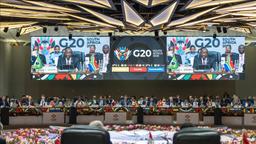Related Publication Files

Female Labor Force Participation: How Does Turkey Compare?
Low female labor force participation (FLFP) levels lead to an excess amount of labor that can't be utilized in such economies. Women's lack of economic independence is also a serious cause for the underdevelopment of women's rights in a country. Among the factors that influence the FLFP, religion has the most significant negative effect especially in Muslim countries.
Turkey, according to our model, does not experience the pressure of religion on FLFP as much as other Muslim countries, remaining a clear positive outlier. However, it does not present the best role model for Muslim countries in terms of FLFP either. Compared to Turkey, less developed countries with more religious or sexist views, such as Iran, Iraq, Indonesia, Malaysia or Morocco have much higher FLFP rates. This might point to a side effect of Turkey's economic development process that these countries have not yet experienced.




